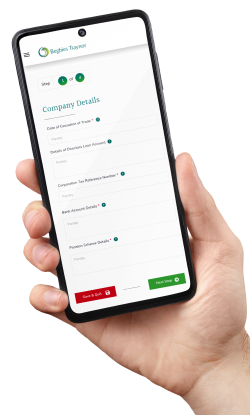If your business owes more than £750 in tax arrears, HMRC has the power to liquidate the company via the issuing of a winding up petition. Forcing your company into liquidation will be seen as a last resort by HMRC and they will seek to resolve the situation with your company long before it reaches this stage.
You can expect to receive a series of warning letters regarding your tax arrears, but these will quickly move on to bailiff action and ultimately company liquidation if you fail to take action and simply ignore the problem.
This is why it’s important to communicate with HMRC if you know your company won’t be able to pay its tax obligations- it demonstrates that you’re not avoiding payment, you just need more time to bring your account up to date.
So what is likely to happen if HMRC seek to force your company into liquidation?
Concerned about the National Insurance increase?
For the 2024-25 tax year, the rate of employer National Insurance increases from 13.8% to 15% adding yet more pressure onto already squeezed cash flows. If you are worried about the impact this could have on your company’s finances, talk to the experts at UK Liquidators. As licensed insolvency practitioners we can explain your options and help you plot a way forward. Call today on 0800 063 9262.
HMRC petitioning to liquidate a company is a lengthy process, and there are many opportunities for a company to prevent this happening along the way. Being proactive when dealing with HMRC is always recommended as they are open to negotiating the terms of repayment for those that engage with them.
Here are some of the actions you can expect HMRC to take against a limited company which has fallen into tax arrears:
Warning letters
The series of warning letters we mentioned earlier will culminate in a Notice of Enforcement, also known as a Final Opportunity Letter. The Notice of Enforcement gives you seven days to pay the debt before collection is handed over to a Debt Collection Agency (DCA) or HMRC bailiffs/enforcement officers. Do not see this as an empty threat; HMRC have huge resources to recover the money it is owed and will not hesitate to initiate bailiff action.
Bailiff action
Debt collectors or HMRC bailiffs will visit your premises with a view to seizing assets in order to settle the payment of the tax debt. They’ll take an inventory of assets for seizure, called a Controlled Goods Agreement, and return in another seven days to seize the goods if the debt remains unpaid at this point.
Court action
If the amount you owe is greater than the value of the assets seized, HMRC may take court action with a view to liquidation. If a Statutory Demand for Payment or County Court Judgment (CCJ) isn’t paid, it provides proof of insolvency and HMRC can issue a winding up petition on the back of this.
Winding up petition
A winding up petition is a serious statement of intent on the part of HMRC to force your company into liquidation. A court hearing date will be set following the winding up petition, and if you are unable to successfully challenge the petition - or repay the amount you owe to the petitioning creditor - it is highly likely the judge will issue a winding up order.
If the court grants a winding up order, your options are extremely limited, therefore you should make it a priority to take action to prevent the situation from getting to this stage.
So what action could you take to avoid liquidation when HMRC are threatening this action against your company?
Liquidation Portal
For Company Directors

There are various ways to prevent compulsory liquidation by HMRC. Communicating openly with the tax body is key throughout the process, as this shows you’re not trying to avoid paying your tax liability, you are just unable to do so at the current moment. Here are some of the options which may be open to you when dealing with HMRC tax debt:
Time to Pay (TTP) arrangement
The Time to Pay scheme is administered by HMRC and provides eligible companies with extra time to pay their arrears if the company’s financial problems are short-term. Time to Pay arrangements vary, but they typically give a company an additional 3-6 months to bring their account up to date. Note, you will also be expected to fully pay any HMRC tax bills which fall due during this time too. Time to Pay arrangements can be negotiated by yourself as a director, but obtaining professional insolvency help is invaluable when negotiating with HMRC.
Company Voluntary Arrangement (CVA)
HMRC may be willing to agree a Company Voluntary Arrangement. This is a formal insolvency procedure whereby they receive a proportion of the debt over an extended period of time. CVAs must be negotiated by a licensed insolvency practitioner and can include a multitude of liabilities, including suppliers, bank borrowing, and onerous lease deals. CVAs typically last between 3-5 years, giving company's much longer to pay their creditors, and some unaffordable debt may also be written off as part of the process. If you want to explore the possibility of a CVA for your company, UK Liquidator's can provide the help and advice you need.
Company administration
Company administration is another formal insolvency process that stops existing or pending legal action against the company. In brief, a licensed insolvency practitioner takes control of the company and formulates a plan for the future. This could include refinancing existing obligations to reduce the current monthly burden, streamlining the business to wind down unprofitable areas, or arranging a sale of the business and its assets to a connected or unconnected third party. Administration is less about saving the company, but more about saving as much of the business as possible.
Creditors’ Voluntary Liquidation (CVL)
If there’s no other choice but to liquidate the company, it’s preferable to do so voluntarily rather than to wait for HMRC to issue a winding up petition and force the company into compulsory liquidation. You can voluntarily liquidate your company even if you have outstanding tax debts to HMRC by entering into a Creditors' Voluntary Liquidation (CVL). As part of this process, you will appoint an insolvency practitioner of your choosing to wind down the affairs of the company and deal with all outstanding creditors. Voluntary liquidation does not involve the courts, and the insolvency practitioner will handle the entire process from start to finish on your behalf once appointed.
Start your online liquidation today
If you have decided liquidation is the right option for your limited company, you can take the first step and begin the process online using our online portal. Starting the process is quick, simple, and can be done at a time that suits you. Your information will be submitted to your local UK Liquidators insolvency practitioner who will be with you every step of the way. Click here to start your company’s liquidation online.
Placing your company into Creditors’ Voluntary Liquidation prioritises creditors and reduces your risk of wrongful trading. As a director of an insolvent company you are legally obligated to place the interests of your creditors first once you become aware your company is insolvent, which means ensuring they don’t suffer unnecessary financial losses.
The key is to act quickly - as soon as you know your company won’t be able to pay the money it owes. Seeking professional help at an early stage may help you avoid court action and prevent liquidation by HMRC.
UK Liquidators offers free, same-day consultations and operates an extensive network of offices throughout the UK, so professional support is never far away.
By completing the test, you will receive:
If you are considering liquidation for your company, taking expert advice at an early stage is crucial. At UK Liquidators, our team of licensed insolvency practitioners are committed to providing limited company directors with the help and advice they need to make an informed decision.




Looking for immediate support?
Complete the below to get in touch